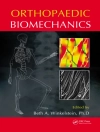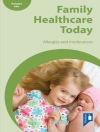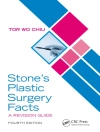Radiation safety and risk management, a critical issue in the nuclear age, is an ongoing concern in the field of radiation health risk sciences. It is the particular mission and task of the Nagasaki University Global COE program to explore human health risks from radiation on a global scale and to come up with measures for overcoming its negative legacies. Ionizing radiation is a well-documented human cancer risk factor, and long-term health consequences in individuals exposed at a young age to such events as the Hiroshima and Nagasaki atomic bombing are now being followed up. Unique and comprehensive, this book introduces updated radiation health-related issues, including the proper collection and analysis of biological samples, cancer research, psychological effects, fair disclosure, and the effects of low-dose exposure as they apply to future public health policy. Also addressed is the need for emergency radiation medicine in case of accidents.
Daftar Isi
Overview of the Global COE Program.- Global Strategic Center for Radiation Health Risk Control.- Overview of the Lectures.- Discussion on Points of Radiation Safety and the Scope of The University of Tokyo Global COE Program.- Network System for Radiation Emergency Medicine in Japan and the Role of Hiroshima University.- Non-DNA-Targeted Effects and Low-Dose Radiation Risk.- Update from the Chernobyl Tissue Bank: Effect of Latency on Different Types of Thyroid Cancer Post-Chernobyl.- Current Risk Estimate of Radiation-Related Cancer and Our Insight into the Future.- Atomic Bomb Disease Medicine.- of Atomic Bomb Disease Medical Research in Global COE Program.- The Offspring of Atomic Bomb Survivors: Cancer and Non-Cancer Mortality and Cancer Incidence.- Ischemic Heart Disease Among Atomic Bomb Survivors: Possible Mechanism(s) Linking Ischemic Heart Disease and Radiation Exposure.- Leukemia, Lymphoma, and Multiple Myeloma Incidence in the LSS Cohort: 1950–2001.- Follow-Up Study of 78 Healthy Exposed Atomic Bomb Survivors for 35 Years in Hiroshima, with Special Reference to Multiple Cancers.- International Radiation Health Sciences.- Research Activities and Projects Within a Framework of International Radiation Health Sciences Research.- Age and Prognosis: Do Adjuvant Therapies Influence the Real Prognosis?.- Mortality of the Chernobyl Emergency Workers: Analysis of Dose Response by Cohort Studies Covering Follow-Up Period of 1992–2006.- Twenty Years After Chernobyl: Implications for Radiation Health Risk Control.- Fallout Exposure of the Population and Thyroid Nodular Diseases.- Radiation Basic Life Sciences, Part 1.- Higher-Order Chromatin Structure and Nontargeted Effects.- p53 Dependency of Delayed and Untargeted Recombination in Mouse Embryos Fertilized by Irradiated Sperm.- The Yin and Yang of Low-Dose Radiobiology.- Induction and Persistence of Cytogenetic Damage in Mouse Splenocytes Following Whole-Body X-Irradiation Analysed by Fluorescence In Situ Hybridisation. V. Heterogeneity/Chromosome Specificity.- Cancer Research.- Molecular Understanding of RET/PTC-Mediated Thyroid Carcinogenesis.- Molecular Prediction of Therapeutic Response and Adverse Effect of Chemotherapy in Breast Cancer.- Multiple Roles of NBS1 for Genotoxic and Nongenotoxic Stresses.- Radiation Basic Life Sciences, Part 2.- The DNA Damage Response in Nontargeted Cells.- The Role of Telomere Dysfunction in Driving Genomic Instability.- Secretory Clusterin Is a Marker of Tumor Progression Regulated by IGF-1 and Wnt Signaling Pathways.- Target of Radiation Carcinogenesis Is Protein: Becoming Triploid Is Proximate Cause of Cell Transformation.- Adult Stem Cells, the Barker Hypothesis, Epigenetic Events, and Low-Level Radiation Effects.- Combined Effect of Ionizing Radiation and N-Ethyl-N-Nitrosourea on Mutation Induction and Lymphoma Development.- ?-Ray-Induced Mouse Thymic Lymphomas: Bcl11b Inactivation and Prelymphoma Cells.- Radiation Risk Management.- Framework of Radiation Safety Management in Japan: Laws, Administrative Agencies, and Supporting Associations.- Background Radiation Dose to the Population Around the Kudankulam Nuclear Power Plant.- International Cooperation in Radiation Emergency Medical Preparedness: Establishment of a Medical Network in Asia.- Disaster and Mental Health.- Long-Term Biopsychosocial Consequences of Disaster: Focus on Atomic Bomb Survivors.- Health Status of Children Exposed to the Chernobyl Accident In Utero: Observations in 1989–2003 and the Implications for Prioritizing Prophylactic Programs.- Psychological Consequences More Than Half a Century After the Nagasaki Atomic Bombing.- Radiation and Cancer.- Significance of Oncogene Amplifications in Breast Cancer in Atomic Bomb Survivors: Associations with Radiation Exposure and Histological Grade.- Paracrine Interactions Between Normal, but Not Cancer, Epithelial and Normal Mesenchymal Cells Attenuate Radiation-Induced DNA Damage.- Chernobyl and Semipalatinsk Nuclear Test Sites: Related Issues.- Thyroid Cancer in Ukraine After the Chernobyl Accident: Incidence, Pathology, Treatment, and Molecular Biology.- Current Trends in Incidence and Mortality from Thyroid Cancer in Belarus.- The Health Status of the Population in the Semey Region and Scientifically Proven Measures to Improve It.- Nuclear Explosions and Public Health Development.












